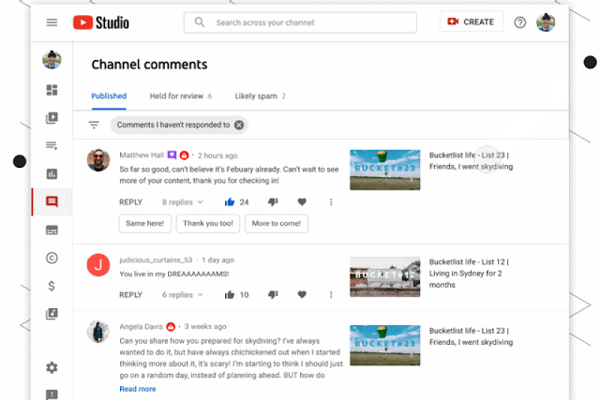Google Integrates SmartReply AI into YouTube
YouTube creators can now use Google’s SmartReply to interact with commenters on their videos. The artificial intelligence will make suggestions on how best to respond to the comments left on videos in both English and Spanish.
Intelligent Response
Google originally released SmartReply four years ago as a way of offering suggestions for writing emails and other messages. The AI now provides recommendations for composing messages in Gmail, Android Messages, and other platforms. YouTube creators with more than a few followers are often deluged by comments that they simply don’t have time to respond to, even if they wish. Those using YouTube Studio can apply a variant of the AI for responding to fans by clicking on suggested replies with relevant, but not very long messages, saying thanks or promising that more videos will be posted. Unlike the templates suggested in emails, the YouTube comment suggestions are shorter, use slang, and mimic the more informal and less grammatically correct language people use in YouTube comments. The AI is also designed only to suggest possible comments where one might be relevant.
“Our goal is to help creators, so we have to make sure that SmartReply only makes suggestions when it is very likely to be useful,” Google research scientist Rami Al-Rfou wrote in a blog post about SmartReply. “Ideally, suggestions would only be displayed when it is likely that the creator would reply to the comment and when the model has a high chance of providing a sensible and specific response. To accomplish this, we trained auxiliary models to identify which comments should trigger the SmartReply feature.”
Language Codes
There’s another critical difference between SmartReply in emails and with YouTube. Unlike the complex recurrent neural network used for longer SmartReply messages, the YouTube suggestions stick to a predefined list of options to reduce how much computing power is needed. The stripped-down approach applied to the language models as well, with a single system across all languages. That makes it possible to use what the AI learns in one language to others, including things present in every language, like numbers and emojis. It also makes for faster and easier updates, so that English and Spanish will soon be joined by other languages, according to Google.
“YouTube is a global product with a diverse user base that generates heterogeneous content,” Al-Rfou wrote. “Consequently, it is important that we continuously improve comments for this global audience, and SmartReply represents a strong step in this direction.”
Follow @voicebotai Follow @erichschwartz
Google Assistant Can Better Tell Apart Voices After Enhancing Set Up Process
Google Assistant Gains Household Contacts and Group Call Features









